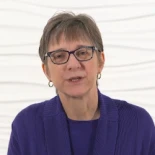Childhood Apraxia of Speech: Treatment of School-Age Children
Presented by Ruth Stoeckel
12-Month Subscription
Unlimited access to:
- Thousands of CE Courses
- Patient Education
- Home Exercise Program
- And more
Meet your instructor

Ruth Stoeckel
Ruth Stoeckel, PhD, CCC-SLP is a speech-language pathologist at the Mayo Clinic in Rochester, MN and specializes in the assessment and intervention of children with apraxia of speech. With 30 years of experience, Dr. Stoeckel has delivered services to children in schools, outpatient clinics, and rehabilitation hospital…
Chapters & learning objectives

1. Connecting Research to Practice
The first chapter of this course provides an overview of the evidence that informs current evidence-based practice, as well as a rationale for the intervention framework proposed in this course.

2. Target Selection Strategies
The second chapter of this course explores the decision making process behind selecting targets for each individual child to maximize outcomes.

3. Issues for School-Age Children
In this chapter, Dr. Stoeckel reviews issues related to treating apraxia of speech in school-aged children in particular, including challenges specific to this population, and the evidence around co-occurring problems in this population.

4. Q&A
Ruth Stoeckel discusses challenges and scenarios with a practicing SLP who often treats children with apraxia of speech.